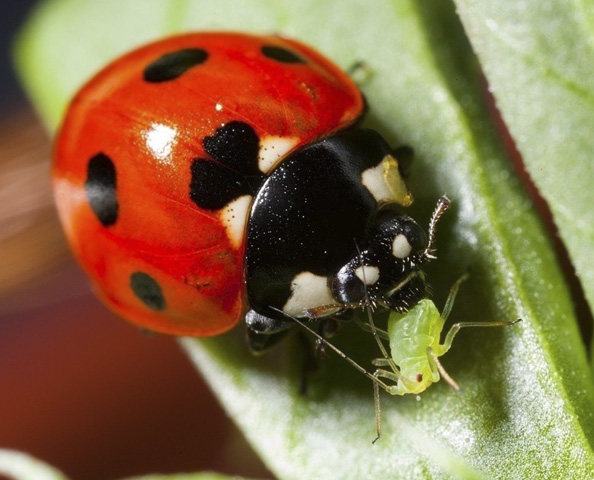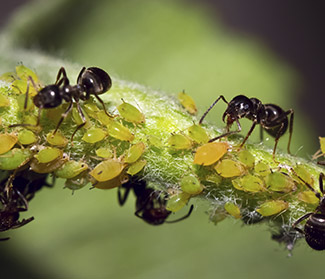
Controlling
Aphids
in your garden

Controlling
Aphids
In Your garden

Controlling
aphids
In Your Garden
Contents
CONTROL APHIDS IN YOUR HOME WITH THESE ECO-FRIENDLY PRODUCTS
Encapsulated fertilizer
Osmocote
Horticultural oil sprays
Mineral oil: Bonide All Seasons Horticultural and Dormant Spray Oil; Monterey Horticultural Oil, Summit Year Round Spray Oil
Insecticidal soaps
Bayer Advanced Natria Insecticidal Soap, Bonide Insecticidal Soap, Miracle-Gro Nature’s Care Insecticidal Soap, Garden Safe Insecticidal Soap, Safer Brand Insect Killing Soap
Insecticidal soaps with pyrethrins
Safer Brand Tomato and Vegetable Insect Killer, Safer Brand Yard and Garden Insect Killer
Sticky barriers
Stikem Tree Pest Barrier, Tree Tanglefoot Insect Barrier
Physical controls
Bug Blaster
Row covers (Fast Start Seed Blanket, Easy Gardener Plant and Seed Blanket, Harvest Guard Protective Garden Cover, Turf Starter Seed Germination Blanket, others)
Beneficial insects
Green lacewings, lacewing eggs, lady beetles (ladybugs): available at local garden centers or online
All aphids make honeydew, a sweet, sticky substance on leaves and stems that attracts ants. Argentine ants love honeydew so much that they protect aphids from their natural enemies. (See the Ant fact sheet in this series for tips on controlling ants.) Honeydew may also cause harmless sooty mold fungus, which makes leaves look black and dirty.
Argentine ants are frequent invaders in California homes. They are tiny (1/8 inch). They come inside a fewat a time at first (the scouts), and then in long lines, following scent trails to a food source.
Are those aphids on your plants?
Aphids aren't all bad...
Attracting beneficial insects to your garden
- Plant a wide variety of flowering plants. (See the Planting a Healthy Garden fact sheet in this series.) Many aphid-eaters, including tiny wasps and lacewings, feed on pollen and nectar.
- Buy beneficial insects like green lacewings or ladybugs (see the Eco-friendly Products list on the front page), but wait until aphids have arrived.

- Keep the ladybugs you buy from leaving your garden. Put them in the fridge for 24 hours. In the evening, mist the aphid-infested plants with water, and shake the ladybugs out of their container onto the wet leaves. In the morning, they will wake up gradually with the warmth of the sun, thirsty and hungry—and in ladybug fast-food heaven.
Controlling aphids
Aphids (and other plant pests including whiteflies and scale) produce a sweet, sticky substance called honeydew that attracts ants. Seeing a lot of ants on plant stems is a sure sign of a pest infestation. Since ants will actually protect honeydew-producers from natural predators, it’s important to keep ants away when you’re trying to get rid of aphids.
- Wipe off or prune away large numbers of aphids from leaves and buds.
- Use a strong stream of water to wash off both aphids and honeydew. Do this early in the day so that the plants will dry before hot sun hits and burns the leaves.
- Paint a sticky barrier, such as Tanglefoot or Stickem (see product list), around the trunks of woody plants, so that ants won’t be able to reach aphids on stems and leaves.
- Bring on the ladybugs! (See above.)
- If all else fails, spray with a horticultural oil spray to smother the aphids.

Prevent Aphids' Arrival
- Use slow-release fertilizers. Some aphids reproduce more quickly on plants with high levels of nitrogen in their leaves and buds. Organic and time-release fertilizers slowly release small amounts of nutrients, so new plant growth doesn’t come all at once.
- Avoid excessive pruning in early spring. Pruning encourages tender new growth that attracts aphids.
- Use a row cover to block out aphids and other pests but allow air, light, and water to reach plants.

Common home and garden pesticides are found in stormwater runoff, treated wastewater, and in local waterways, sometimes at levels that can harm sensitive aquatic life. Our Water Our World, sponsor of this website, is a joint effort by water pollution prevention agencies, participating retail stores, and pesticide distributors and manufacturers — working together to reduce the risks associated with pesticide use.
This website is provided as a public service. No endorsement of specific brand name products is intended, nor is criticism implied of similar products that are not mentioned.

